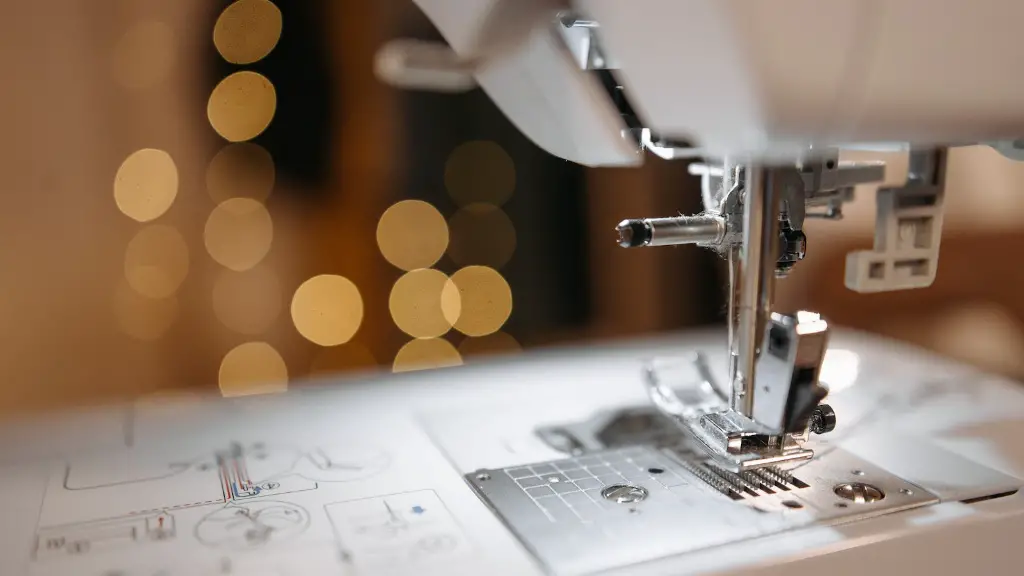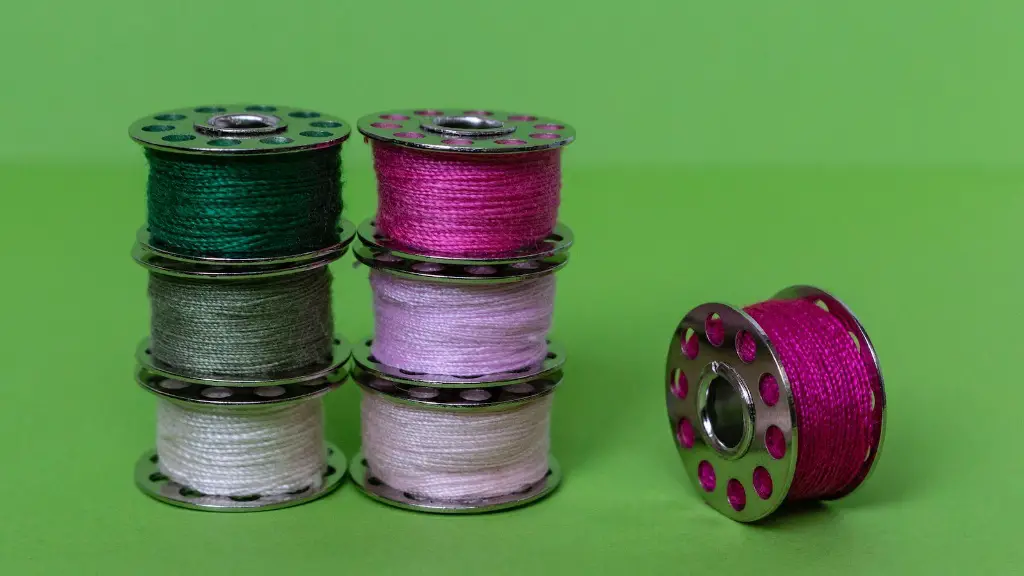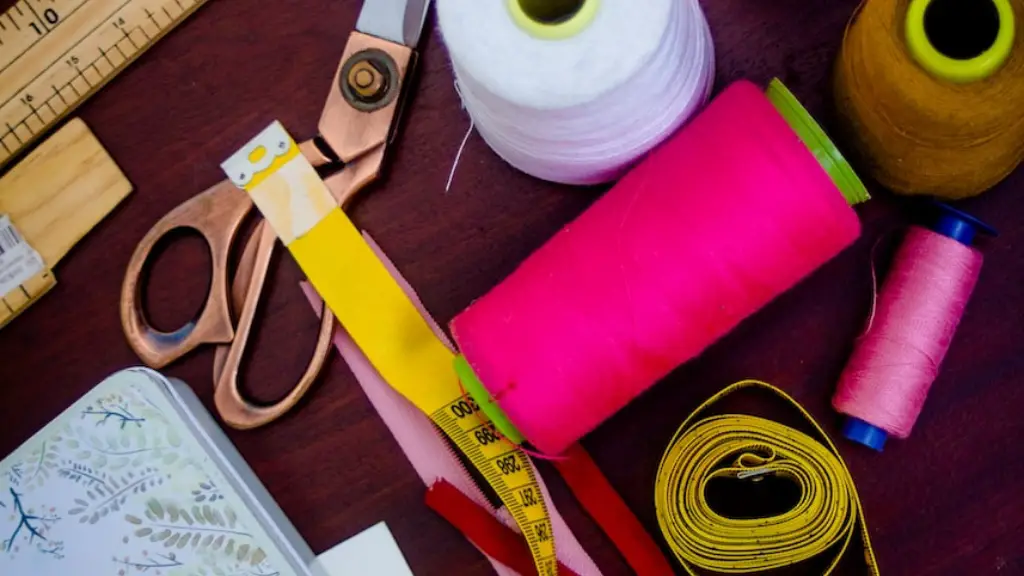Are sewing machines expensive? Sewing machines have come a long way in today’s modern world in terms of overall affordability and cost. From industrial sewing machines used in tailoring shops to modern machines used for making clothing at home, the vast selection and wide range of options available has made it easier than ever to find the right sew machine for any job. As a result, while some of the higher end industrial machines may be quite expensive, many cheaper models tend to offer amateurs and cost-conscious sewers excellent value for money.
The price tag of a sewing machine depends on several factors like the features and functions included as well as the brand. Generally, machines with basic features cost less as compared to those with advanced features. For instance, a beginners sewing machine may cost around $200 to $400, whereas one with a more extensive range of features and options can be purchased for around $1,000 to $2,000. Professional-grade industrial machines, on the other hand, usually cost upwards of $2,000.
Since sewing machines are such a versatile tool, they can be used for a wide range of tasks including clothing alterations, crafting, and quilting. With industrial grade models, sewers can also take on some large-scale projects such as upholstery, draperies, and tailor-made garments. For someone just starting out, however, the cost of these machines can be prohibitive. In this case, experts recommend starting off with an entry-level or midrange model and getting a professional-grade machine only if your needs require it.
The variety of features and options available for sewing machines can also contribute to a pricier purchase. While some basic functions such as straight and reverse stitching are often included in most models, fancier features like adjustable speed, multiple needle positions, and stitches may require additional cost. Extras like free arm tables, buttonhole attachments, speed control, and thread cutters can also add more to the price. It is important to consider what your needs and preferences are and buy accordingly.
In addition to features and cost, how well the machine works is also an important factor. While the upfront cost may be higher, purchasing a quality machine with a good warranty and reputation can save sewers money in the long run. Not to mention, higher-end machines offer more reliability and longevity. After all, even a low-cost machine will become expensive if it fails to work correctly or frequently breaks down.
Options to Save Money
If you want to save money on a quality sewing machine, there are some other options available. Look for sales or discounts on known shopping holidays. You may find that a specific model you are eyeing is discounted by 10-20% off its original price on certain days of the year. You can also look for second-hand models or refurbished machines, as those might be available at reduced prices.
Similarly, trade-in programs offer another way to bring down the cost. If you have a basic machine that you’re not using anymore, you can trade it in to get a new model at a discounted rate. Take online reviews into consideration and look into the customer feedback of the model you are buying. Doing this will help you determine whether a particular machine is worth the money or not.
Finally, if you’re just trying out sewing for the first time and are unsure if you’ll continue in the long run, it might be a good idea to borrow a machine from a friend or family member instead of buying one. That way you can get a taste of what it’s like to use a sewing machine and then decide if you need to get your own.
Summary Of Features To Look For
When shopping for a sewing machine, there are several different features and options that you should consider. Keeping the price in mind, look for the ones that best match your needs. The following is a quick summary of what to look for in a sewing machine:
- Number of stitches – The more stitches, the better.
- Stitch width – Adjustable stitch width allows you to sew different types of fabrics.
- Stitch length – Adjustable stitch length helps you control the tightness of the seam.
- Thread tension – Make sure to check the thread tension before using the machine.
- Presser feet – Different types of presser feet are available for specific jobs.
- Needle position – Adjustable needle positions help create better control over the fabric.
- Feed dogs – Feed dogs are essential for guiding the fabric through the machine.
- Speed control – Variable speed control lets you sew at a comfortable pace.
- bobbin winder – Bobbin winders make threading quick and easy.
- Durability – Quality machines are more durable and last longer.
Comparison of Different Types of Sewing Machines
Sewing machines are available in a wide range of styles and types to suit different tasks. Before buying a sewing machine, it is important to compare what’s available and decide which type is best for you. Generally, four main types of machines are available: mechanical, computerized, serger, and heavy-duty.
Mechanical sewing machines usually come with a set of pre-programmed stitch patterns and length settings. They are easy to use, ideal for beginners, and generally cost less than other types of machines. Computerized machines, however, come with a wide range of customizations and options. They offer a host of features like memory function, programmable stitch patterns, and automatic needle threader, making them great for more experienced sewers.
Serger machines are ideal for finishing off the edges of garments. Unlike traditional machines, sergers offer a complete and neat seam and can also be used for embellishments. Heavy-duty machines, on the other hand, are designed for larger projects that require more power. Featuring heavier construction, they are designed for professional-level tasks.
Maintenance Tips for Sewing Machines
Proper maintenance and storage of sewing machines can extend their lifespan and keep them running efficiently. The following are some of the tips experts suggest to keep your machine in good condition:
- Store your machine in a dry area with low-level humidity.
- Clean the exterior with a dry cloth and also use a soft cloth for polishing.
- Never oil the parts of the machine.
- Clean the machine after each use.
- Keep an eye on the parts and replace them if needed.
- Replace needles regularly to avoid any issues.
- Use the right type and weight of thread for the fabric.
Regular maintenance and inspections of your sewing machine are key to getting the most out of it. It is important to read the manual and understand its basic functioning before you start using it. Also, always feed the fabric slowly into the machine and avoid pulling it or pushing it. Finally, make sure to take it to a repair shop if it exhibits any malfunction or strange behavior.
Replacement Parts And Accessories
In addition to the basic parts such as needles, bobbins, power cord, and foot pedal, sewing machines can also be customized with additional accessories and parts. While some of these extras may seem unnecessary, they can make a big difference in terms of the overall functionality of the machine. These accessories can include things like a roll object feeder, an attached teflon foot, a blind hem foot, embroidery tools, a dress guard, and a dust cover.
When it comes to replacement parts, it is important to make sure you purchase only genuine parts from authorized dealers. Otherwise, you risk voiding your machine’s warranty and endangering the performance of the entire machine. When shopping for replacement parts, look for those that match the model number of your machine for best results.
Conclusion
Sewing machines come in a range of prices from inexpensive options for beginners to costlier professional-grade models. Regardless of your budget and needs, there are some tips and factors to keep in mind when shopping for a sewing machine such as the features, types of machines, and additional accessories and parts. This way, you can make sure that you are getting the most bang for your buck and buying the right machine for your needs.




